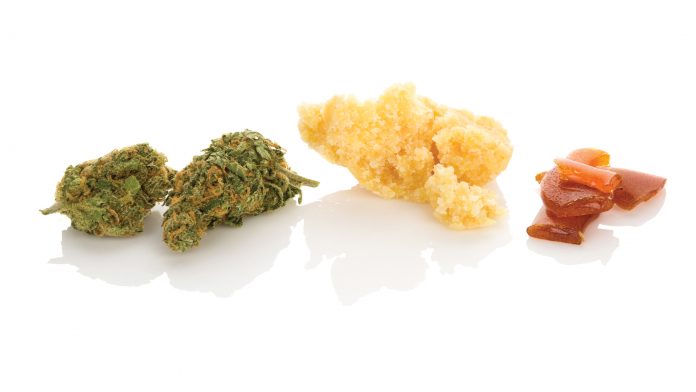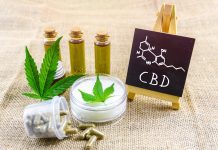
Did you know that a better understanding of cannabis concentrates can improve patient experience when using cannabis medicines?
Cannabis concentrates can offer a lot more value for money in terms of efficacy, making them a popular choice among patients. Understanding the difference between the types of cannabis extracts and distillates can help patients get the best out of their medicine. ‘Concentrate’ simply means concentrated cannabis compounds derived from the raw plant.
One kind of concentrate in particular – CBD oil – has gained a lot of popularity over the past few years for its medicinal value. However, contrary to popular belief, THC also has many medicinal qualities and more research is being done into the combined effects of THC and CBD for therapeutic use.
Oils that contain THCa can be used without any psychotropic effects as it is only when the THCa is heated that it turns into THC. However, some concentrates contain very high amounts of the psychoactive component THC – up to 99% in some cases – so, it is vital for patients to properly understand the medicine they are using.
Extraction and distillation
In order to make a concentrated oil, compounds contained in the plant need to be extracted and distilled (or refined). There are two kinds of extraction methods – solvent based and solventless. Traditionally, solventless extraction is done using kief boxes or grinders. This is a simple way of separating compounds by grinding the marijuana and sifting it through a metal gauze (or on a larger scale through a silk screen) – producing what is called ‘dry sift’ or ‘pollen’. The remaining products can then be heated and pressed to create a rosin extract. Ice-water extraction has also been used for many years to make concentrates.
More modern options for extraction today include CO2, hydrocarbon and the cryo-ethanol process. Distillation uses a heating and collection method of separation and this is a more specialised element of the commercial concentrating process. Short path distillation is a specialised form of distillation that creates potent concentrates and a process called ‘winterisation’ removes unwanted compounds such as lipids. The difference between extracts and distillates is their purity – products that have been distilled are, by nature, much purer than extracts.
What do you know about rosin?
Rosin is extracted directly from the flowers – traditionally made from the heating and pressing of hand extracted compounds. As the industry has grown there are now industrial size presses that can obtain rosin on a large scale. This concentrate is totally solvent-free so can give patients peace of mind if they are concerned about what is in their medicine. Rosin also retains terpenes so is just as flavourful as other kinds of cannabis concentrates.
BHO concentrate
Butane hash oils come from the hydrocarbon extraction process. This process uses high pressures to extract compounds from the plant by stripping them and is fairly good at retaining the terpenes from the plant – producing a tastier final oil product. However, this process does – almost always – leave traces of butane in the product. These oils can be high in THC content, containing anywhere between 70-90% THC and higher in some cases.
CBD oil
CBD oil is a concentrated oil that contains the non-psychoactive component of cannabis only. Typically, this is extracted then distilled and separated from other compounds to create a pure CBD oil. Taken orally through dropping under the tongue, as this is the best method for CBD absorption, this product is very popular for pain relief, anti-inflammation, for conditions such as epilepsy and other medical uses. Some CBD oil is made from the THC carrying plant whereas others are made from hemp which has less than 0.3% THC. CBD oil from hemp only contains traces of CBD and is a food supplement (containing vitamins such as magnesium) rather than a medical grade product.
Resin, live resin and bubble hash
Resin is a naturally forming sap from the plant whereas live resin is a cannabis concentrate that uses buds that have been freeze dried for the extraction process. This allows for more terpenes to be retained within the concentrate before they dry out to create a flavourful product (this still depends on the flavour of the flower being used) compared to concentrates that have come from bud that has been allowed to cure before extraction. Bubble hash is similarly extracted in the sense that it uses cold temperatures during the process through ice-water extraction.
Tinctures
Tinctures are alcohol-extracted concentrates and are quite high in THC content. Alcohol-based extraction methods are often used due to being one of the easiest and quickest ways of creating a concentrated compound product for the medical market. Alcohol-based extraction also allows for the product to retain a longer shelf life, as the alcohol acts as a preservative.
Dabs, shatter, wax, budder and more
These are different names for similar final products which vary depending on what happens to the compounds during the refinement process, or, how it is set post-extraction. Shatter is brittle and glass-like, whereas wax and budder are softer and not transparent, for example. The term ‘dabbing’ is a form of flash vapourisation using a concentrate, which is why different concentrates are sometimes referred to as ‘dabs’.
Normally – concentrates that are light and golden in colour are of high quality as this indicates there is no unwanted compounds such as solvents in the product. However, nowadays, it is possible to wash impure extracts in order to give them a cleaner look – this means that the only way to truly know the quality of your extract is to get it lab tested or to get it from a trusted vendor. Texture and consistency of a cannabis concentrate has little to do with the quality.
The amount of moisture retained within the concentrate, temperature and terpenes within the concentrate, can all impact the texture, as well as whether there has been any molecular disturbance of the compounds. If a concentrate is disturbed during the extraction process a softer consistency more like wax or crumble is created. Sometimes products are whipped up into a butter-like consistency post-extraction, and strains of cannabis that have higher lipid contents can create a sugary consistency.
Please note, this article will appear in issue 10 of Health Europa Quarterly, which will be available to read in July 2019.







